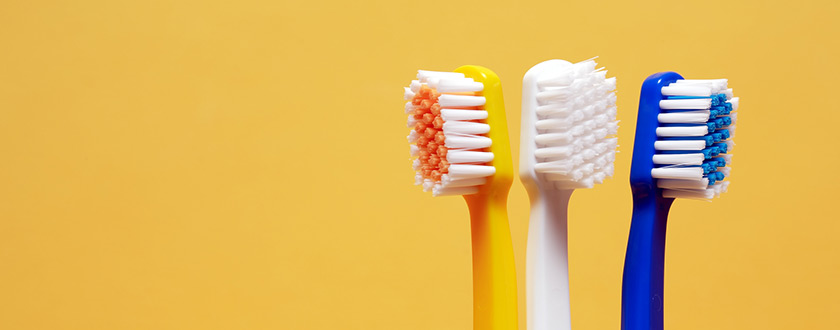What Type of Toothbrush Should I Use?
The right toothbrush can make the difference between a good and bad dental visit. The bristles must be the right size and softness to effectively clean without damaging the enamel of the tooth. Here are a few criteria to consider as you choose your next toothbrush.
Size and Shape
It may seem as though the size of a toothbrush should match the mouth size, but in actuality experts recommend a toothbrush with a small head size that can reach into the smallest crevices of your mouth. Most adults will get the best results from a toothbrush that has a head one-half inch wide and one-inch tall.
Shape can be more complicated. Some toothbrushes have tapered heads while others have more rounded ones. You’ll also notice a variety of handle options, including those that have ridges to prevent sliding between your fingers while you’re brushing. For these options, you should choose the toothbrush style that is most comfortable for you.
Softness
As you’re shopping for a toothbrush, you’ll likely notice the packages are marked for bristle softness. It may seem as though a medium or hard bristle would do better at cleaning the teeth, but it’s important to avoid a brush that is too hard on the gums and tooth enamel.
Most dentists recommend toothbrushes with soft bristles since they’ll do the job effectively without causing damage. Rounded tips are also better at protecting the teeth during brushing. Whether to use a powered or manual toothbrush is up to you, as long as the bristles on the toothbrush are soft and effective in cleaning your teeth.
Replacement Schedule
Experts recommend changing your toothbrush every three months, but only 8.6 percent of those surveyed admitted they comply with that advice. Over time, the bristles of a toothbrush weaken, making them less effective at removing bacteria. By setting yourself on a regular toothbrush replacement schedule, you’ll have a cleaner mouth and more pleasant medical visits.
You should also change your toothbrush more often if you’re ill. The bacteria on the toothbrush can remain, preventing you from getting better more quickly. Change your toothbrush as you start to feel better, then again when you’ve recovered completely to increase your chances of a lasting recovery.
Toothbrush Storage
Because of germs in the bathroom, some people now cover their toothbrushes with disposable cups or holders that have covers. This can promote moisture retention, leading to bacterial growth that will then be transferred to your teeth. Instead, close the toilet before flushing and regularly wipe down surfaces that are frequently used.
If multiple toothbrushes are stored in a small space, the heads should be far enough that they don’t touch to avoid spreading viruses from one family member to another. Avoid the temptation to sanitize your toothbrush in the dishwasher, as well. The bristles can become damage, reducing its cleaning effectiveness.
Most major toothbrush brands make their products to comply with recommendations made by the American Dental Association. At your next dental visit, ask your dentist for recommendations of toothbrush types that are best for your particular dental situation for best results.





